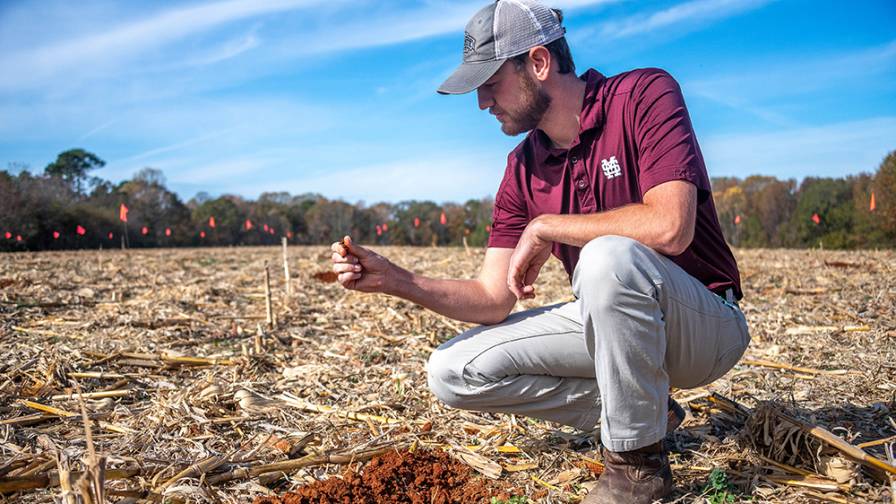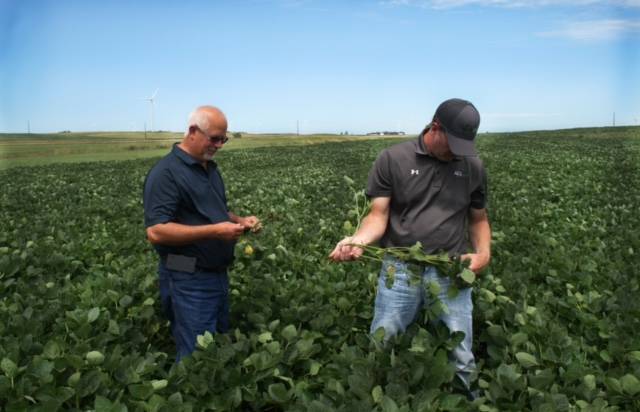Fertilizer Logistics Strained, Nitrogen And Urea Supplies Dwindling
The frenzied push to plant this year’s U.S. corn crop in the face of repeated delays has exposed a strained link in the agricultural network: fertilizer.
After one of the slowest starts to sowing on record due to heavy rains, farmers sprinted into action, planting about 42 million acres of corn in one week last month – a record and almost twice as much as the typical season’s peak planting week.
However, the logistics for bringing key crop nutrients like urea and liquid nitrogen to the Midwest from the Gulf of Mexico or Canada – and then distributing them to growers – failed to keep pace as dealers were overwhelmed by the surge in demand.
The problem was not the global supply of fertilizer, which is ample; it was getting it to the right place at the right time.
The logistical strain helps explain why it took farmers longer than usual to get their crops fully planted, despite an unprecedented pace in certain weeks. It also fuels doubts about yields, which can be hurt when crops are planted late.
USDA on Wednesday lowered its outlook for the autumn corn harvest 1% from last month due to reduced yield expectations.
“There are a lot of growers that have been impacted,” said Alan Hagie, chief executive of Hagie Manufacturing, an Iowa-based manufacturer of self-propelled agricultural sprayers.
“They’re struggling to get all this fertilizer on at once and it’s moving so much faster than it used to.”
Farmers are able to sow crops faster than ever thanks to massive planters that cover 36 rows of corn at a time and feature global positioning systems that allow them to plant 24 hours a day if they want.
Fertilizer dealers, who are accustomed to doling out crop nutrients over a longer period of time, have not seen similar advancements. Many do not keep extra fertilizer on hand, fearing they may be stuck with it in the fall, when prices often drop.
Farmers contract to buy nutrients months in advance but can take delivery at any time over a period of weeks. With heavy rains thwarting planting through much of the spring, precisely predicting that demand was harder than usual.
Key types of fertilizer like urea are imported to the United States from the Middle East and China and travel to Midwest farms by barge up the Mississippi River and then by train or truck.
It takes up to 65 days to move fertilizer from origin to the farmstead, and farmers are able to load out material three times faster than distributors can restock it, according to CHS Inc., the nation’s largest farmer-owned cooperative.
“When the farmer wants to go that fast, which is becoming increasingly more routine, the system has a very difficult time keeping up with it,” said Brian Schouvieller, senior vice president of agriculture business for CHS.
His company is among those, including Agrium Inc and Koch Industries Inc, that are planning to build or expand more than three dozen fertilizer plants and storage facilities across the United States. The trend is fueled both by demand for closer proximity to farms as well as cheap prices for natural gas, which is the main feedstock for ammonia nitrogen fertilizer.
But the solution won’t be quick. The $1.4 billion nitrogen manufacturing plant in North Dakota that CHS is building, its first, is set to start up in 2016.
Agrium, the largest U.S. farm retailer of crop inputs, last week stepped back from two projects that would have expanded its capacity to make nitrogen-based fertilizer, partly because competitors are pursuing similar plans.
The company did not respond to a request for comment on the logistical shortfalls.
No More Nitrogen
The strains emerged as U.S. farmers set out to plant 97.3 million acres of corn, the most since 1936 and nearly a quarter more than a decade ago, according to USDA.
In North Dakota, agricultural supplier Alton Agronomy temporarily ran out of nitrogen as planting conditions improved in mid-May, said Robin Stene, general manager of Halstad Elevator Company. Halstad is part of a group of cooperatives that own Alton Agronomy.
“When everything is going to happen in 10 days, logistically there’s going to be shortages around,” Stene said, referring to the fast pace of planting.
Farmers were left with a vexing choice: plow ahead and risk a diminished yield or await new supplies and push crop development deeper into the hotter, more hazardous summer months.
In Minnesota, Salol Elevators temporarily ran out of urea, causing corn farmers to “actually shut their operations down waiting for fertilizer,” Andy Pulk, a farmer who sits on the elevator’s board, said.
He said he postponed planting fields of canola due to the shortage and never sowed about 30% of the acres he had intended.
Corn yields get a boost if farmers apply nitrogen at planting time because the fertilizer helps kick off the growing process, North Dakota State University agronomist Joel Ransom said.
He said the biggest threat to yields so far has been planting beyond the optimal date, which differs by state – in North Dakota, for instance, it was May 1. On average, agronomists estimate that yields drop about a bushel per day for each day’s delay.
Farmers have a month-long window to apply nutrients after planting without seriously hurting yields. Crops suffer stress if they grow too long without it.
“There definitely was a lack of capacity to meet the needs on some of those busy days,” Ransom said.





